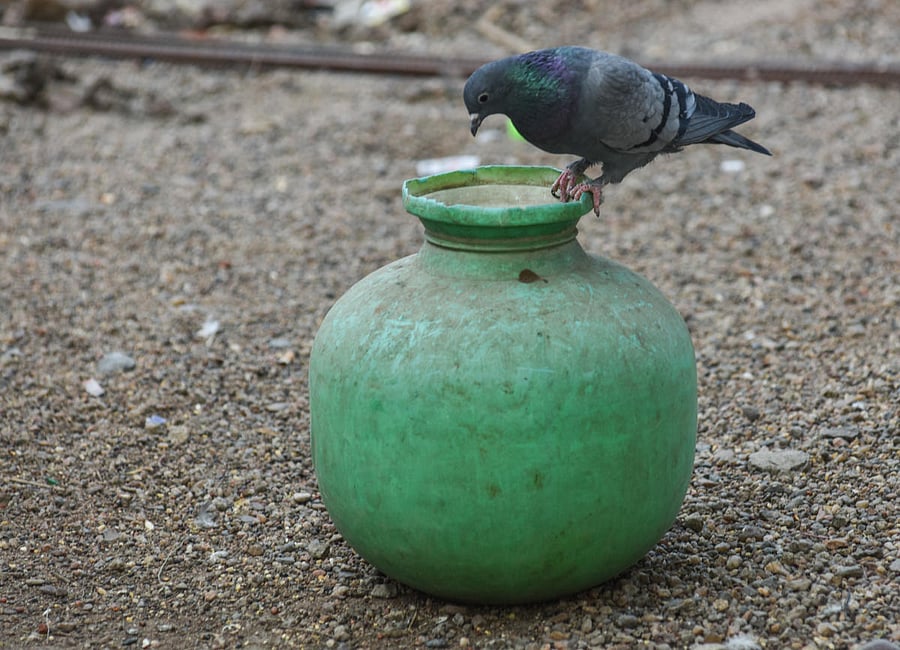
Water is a basic necessity -- for the rich, the middle class and the poor alike. Access to clean drinking water and adequate sanitation is vital to human health. The majority of the rural population lives without sustainable access to safe drinking water and basic sanitation.
For the rich, the elite and the entitled, the vouge is to indulge in luxurious detoxification bathing, soothing bath salts, and warm suds, and remain undeterred by ongoing water scarcity issues. A good soak in a warm bathtub may bring them tranquillity. But the same quantity of water can do wonders for a household deprived of water and sanitation.
Everyone talks about water conservation, but the fact remains that very few walk the talk. The rest regularly whine over water woes. At this juncture, the only thing that can ensure water sustainability is awareness and effective water management. With no rainwater harvesting and check on wastage or recycling, groundwater resources are depleting fast. With an increase in consumption, dependency on tankers have worsened the water supply crisis. Middle-class society has embraced this with a bitter pill, instead of challenging it. The growing construction activities, poor management and climate change have increased scarcity of water. Accessing safe water is a daily struggle for 650 million people worldwide. The poor and underprivileged spend more on water than the wealthy and the middle class.
Bengaluru is inching towards a drastic water shortage and is likely to become the Cape Town of India if sharp precautionary measures are not taken immediately. Bengaluru’s water bodies have declined by 80% since 1973 and the water table has fallen from 10-12 meters to 77-95 meters below the surface in two decades. Beijing, Cairo, Istanbul, Jakarta, London, Mexico City, Miami, and Sao Paulo are the other global cities which are going the Cape Town way. Most aquifers around the world are in stress, with little or no sign of recharging.
We have become so accustomed to the warnings that we still take water for granted. It is shocking to discover that schools in drought-hit regions remain closed due to lack of drinking water. 15% of schools and Anganwadi centres have no access to safe drinking water. Only 20% of the rural population is fortunate enough to get potable drinking water. Over 180 million Indians do not have access to safe drinking water.
Over two billion have no access to safe water worldwide and some 4.5 billion people, including 200 million Indians, lack adequate sanitation services. The most vulnerable to water scarcity are women and girl children. Women and girls across the world spend 200 million hours every day carrying water. As a result, rural women are missing opportunities for employment and income generation. Fetching water deprives girl children of time for studies. Worse, the water is often contaminated, and insufficient sanitary conditions lead to diseases. Some 2,000 children die each day from infected, unsafe water and poor sanitation, out of which 500 children die from diarrhoea each day in India.
Water crises are often closely tied to the country’s economy. Most parts of India are drought-hit and farmers are unable to irrigate lands. The contribution of agriculture to GDP stood at 52% in 1950. It’s a mere 15% now. These figures convincingly throw light on the reasons for the decline in employment, production and contribution to the economy from agriculture.
Globally, scarcity of water and migration were related, and India is no exception to the phenomenon. The loss of livelihood due to acute water shortage force those affected to migrate. Thus, people are increasingly migrating from rural to over-populated towns. The mass exodus of the rural population was the leading cause of the shortage of agricultural labour and falling agricultural production.
When contemplating the water crisis, the crux is often centred around global warming as the key factors — water and migration — are closely associated with climate change. It has an impact on rainfall patterns, which leads to increased flooding, drought, and soil erosion. Soil erosion, the devastating result of global warming, is not only reducing agricultural productivity but also contributing to the pollution of rivers, lakes and water bodies. The eroding soil carries fertilisers, pesticides and crop stubble to downstream water bodies and contaminate the water.
Inefficient policies
Governments have tried to introduce water reforms but the policies have faded away as if they were written on moving water. Blame it on poor execution and implementation and the circumstances. In most cases, the process of investment in water infrastructure occurs at a snail’s pace. The government is finding it difficult to control the water crisis and failing to provide clean and safe water.
In 2009, the central government replaced the Accelerated Rural Water Supply Programme (ARWSP) with the National Rural Drinking Water Programme (NRDWP). However, the CAG report says that the NRDWP had failed to meet its targets in increasing tap connections and providing adequate drinking water for cooking and other domestic needs on a sustainable basis. We ought to bring in dynamic and sustainable water policies and institutional reforms.
Freshwater is the most precious resource as the earth contains less than 2% of it. The human right to fresh water entitles everyone to safe, sufficient and affordable water. Access to clean water can curb the school dropout rates, mortality rates, eliminate diseases, empower the girl child’s education and improve food supply and food security. Water preservation and sustainability should be the top priority as water is the most basic requirement. Every citizen is obligated to spread awareness to promote harvesting, conservation and to protect freshwater ecosystems. Remember, no water, no life. Let’s act now for future generations to survive.
(The author was formerly with National Geographic)